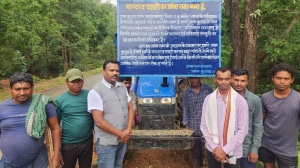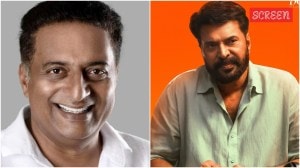Pensioners’ Paradise is Heaven for Young Talent
Gold in England, Bronze in the United States of America, Silver in Romania...the list goes on. Winners at every International Maths Olympiad...

Gold in England, Bronze in the United States of America, Silver in Romania…the list goes on. Winners at every International Maths Olympiad held since 1992 — a track record that could be the envy of any institution. But at Bhaskaracharya Pratishthan, Pune, it’s time to get ready for the next batch. And across the city, at several other institutions, the search is on for classrooms and a few students to prove a point.
It all started a decade ago when Indian students were still trying to get a mention in the Math Olympiad. City student Sachin Lodha travelled to Moscow and brought back the bronze medal. Back home, at the Bhaskaracharya Prathishthan, where Lodha had put in hours training for the event, there was a quiet celebration. They knew that this was the beginning.
By 1998, as Indian teams were gaining in confidence, a city team left for the International Physics Olympiad. Travelling with them was Dilys Thomas, also trained at the Pratishthan. ‘‘It was our first outing at the meet and we were competing with 60 countries. We stood tenth and managed an honourable mention,’’ he recalls.
Soon what started as a trickle became a veritable deluge. Then, at the Inter University Centre for Astronomy and Astrophysics (IUCAA), a small band of scientists called up their counterparts at the Tata Institute of Fundamental Research (TIFR). Here was a band of young amateur astronomers who could be shaped into winners at the international astronomy olympiad, they said. IUCAA’s Shaumak Roychowdhury teamed up with his counterparts at TIFR to start training their first batch of astronomers.
Success came the very first year when Varun Bhalerao, a Class X student, brought home the gold in his first outing. And he set a record of sorts when he brought in the gold the next two consecutive years. Now, Harshvardhan Agashe and Radhika Marathe are peering through the telescope for this year’s International olympiad. ‘‘It was Shaumak’s approach that made a crucial difference,’’ says Arvind Paranjpe, science popularisation officer at IUCAA, who is now holding fort after Roychowdhury went abroad.
Meanwhile, the next generation of young astronomers gets ready for the international Olympiad, this time with a little help from Paranjpe and his colleagues. Today he, along with two doctors — an ophthalmologist and an anaesthetist—are trying to take this movement forward. The three established Akashmitra, a group that aims to identify and encourage ‘‘potential astronomers’’ and help them take off beyond the Olympiad to a career in the stars.
Similar efforts are on at the Indian Association of Physics Teachers (IAPT) headquartered in Pune’s Indian Institute of Education. Says Y R Waghmare, president of the IPTA: ‘‘The board examinations are memory-oriented. We wanted to change that and introduce creativity of thought.’’
A joint initiative between the IAPT and the Homi Bhabha Centre of Education got backing from the Department of Science and Technology. Soon IAPT was conducting screening tests for the international Chemistry and Biology Olympiads with the first chemistry team travelling to the meet in 1999 and the biology team in 2000.
‘‘Since then our students have won at every meet,’’ says Waghmare. For the students themselves, the experience meant going beyond reams of rote. ‘‘It changed my life,’’ says Shubhangi Saraf, the first Indian girl to participate in the Maths Olympiad and win a bronze.
Her team mate, Nikhil Salve, won the bronze on his first outing and brought home the gold this year.
While a majority of them head to the IITs, many are keen on the basic sciences, too—good news at a time when research in the basic sciences is losing talent by the hour. Salve has his heart set on Mathematics at the Indian Statistical Institute (ISI)—considered the most cutting-edge course in the country. Bahlerao is at IIT, Mumbai pursuing an MSc in mathematics. Their predecessor Dilys Thomas is one of the 20 Indian students chased by Stanford University after he graduated from IIT, Mumbai with the President’s Gold Medal.



- 0119 hours ago
- 0218 hours ago
- 0319 hours ago
- 0419 hours ago
- 0519 hours ago




























